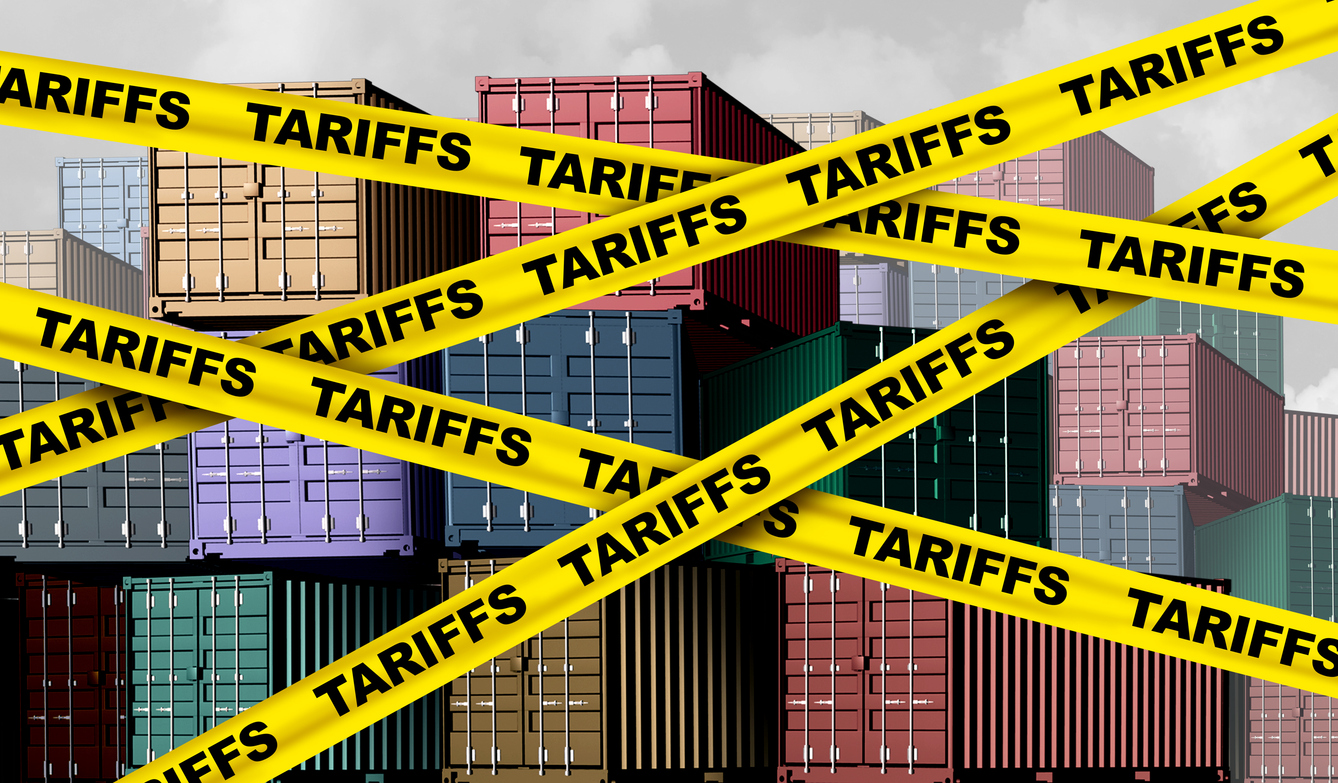Analysis of Proposed EPA Regulatory Rollback and its Implications for Sustainable Development Goals
Introduction
A proposal by the Environmental Protection Agency (EPA) to rescind regulations on greenhouse gas emissions from motor vehicles presents significant challenges to the achievement of several United Nations Sustainable Development Goals (SDGs). While the stated purpose is to provide consumer savings, an analysis of the EPA’s own supporting data indicates adverse effects on climate action, economic stability, and clean energy adoption. This report outlines the proposal’s direct impacts on key SDGs.
Impact on Climate Action and Clean Energy (SDG 13 & SDG 7)
Reversal of Climate Action Initiatives
The core of the proposal is the elimination of policies designed to limit tailpipe emissions, a critical component of national climate strategy. This action directly contravenes the objectives of SDG 13: Climate Action, which calls for urgent measures to combat climate change and its impacts. The administration’s position is that the EPA lacks the authority to regulate greenhouse gases under the Clean Air Act without new congressional legislation, thereby halting progress on established climate goals.
Deterioration of Fuel Efficiency and Clean Energy Transition
The rollback would lower fuel efficiency standards, slowing the transition to cleaner energy sources in transportation and undermining SDG 7: Affordable and Clean Energy. The projected changes include:
- Standard Gas-Powered Cars: Under previous policies, cars were expected to reach 61.2 miles per gallon (mpg) by 2035. The new proposal lowers this target to 50.5 mpg.
- Light Trucks and SUVs: Previous standards aimed for 46.2 mpg by 2035. The proposal reduces this target to 28.6 mpg.
This policy shift disincentivizes the adoption of electric and hybrid vehicles, increasing reliance on fossil fuels and hindering progress toward a sustainable energy future.
Economic and Social Consequences (SDG 8, SDG 11 & SDG 12)
Projected Economic Instability and Job Losses
The proposal is projected to have a negative impact on SDG 8: Decent Work and Economic Growth. Analysis of data from the U.S. Energy Information Agency (EIA), cited within the EPA’s report, reveals significant economic drawbacks.
- Job Losses: The data estimates a net loss of 450,000 jobs by the year 2035 as a direct result of the deregulation.
- Increased Consumer Costs: Reduced fuel efficiency and higher demand for gasoline are projected to lead to increased gasoline prices for all consumers.
- Business Impacts: Experts warn that businesses could face billions in losses from higher trucking and transportation costs, which could ripple through the economy and raise prices for everyday goods.
Implications for Responsible Consumption and Sustainable Communities
By encouraging the production and purchase of less fuel-efficient vehicles, the policy undermines SDG 12: Responsible Consumption and Production. It moves away from sustainable production patterns and promotes consumption with higher environmental costs. Furthermore, the resulting increase in tailpipe emissions directly threatens air quality, posing a challenge to SDG 11: Sustainable Cities and Communities, which aims to create healthy and resilient urban environments.
Conclusion: A Contradiction to the Sustainable Development Agenda
The EPA’s proposal to roll back vehicle emission standards, based on an analysis of its own supporting data, is in direct conflict with multiple Sustainable Development Goals. The policy is projected to weaken climate action, impede the transition to clean energy, and create negative economic outcomes. The primary areas of concern include:
- SDG 13 (Climate Action): Increased greenhouse gas emissions.
- SDG 7 (Affordable and Clean Energy): Reduced fuel efficiency and slower adoption of clean vehicle technology.
- SDG 8 (Decent Work and Economic Growth): Significant projected job losses and increased costs for consumers and businesses.
- SDG 12 (Responsible Consumption and Production): Promotion of less sustainable consumption and production patterns.
- SDG 11 (Sustainable Cities and Communities): Negative impacts on urban air quality.
Ultimately, the proposal represents a significant step away from the integrated economic, social, and environmental objectives that form the foundation of the global sustainable development framework.
Relevant Sustainable Development Goals (SDGs)
-
SDG 7: Affordable and Clean Energy
The article directly addresses energy efficiency in the transportation sector. The discussion revolves around fuel efficiency standards (miles per gallon) for vehicles and the promotion of electric vehicles, which are central to ensuring access to affordable, reliable, sustainable, and modern energy for all. The rollback of these standards impacts energy consumption and the transition to cleaner energy sources in transport.
-
SDG 8: Decent Work and Economic Growth
The economic consequences of the policy changes are a key focus. The article cites an analysis predicting significant job losses (“a loss of 450,000 jobs by 2035”) as a direct result of revoking the emissions standards. It also discusses the broader economic ripple effects, such as increased fuel and maintenance costs for businesses and consumers, which could “undercut job growth.”
-
SDG 13: Climate Action
The core issue of the article is the regulation of greenhouse gas emissions to combat climate change. The EPA’s proposal to “roll back regulations aimed at curbing greenhouse gas emissions” and to rescind policies limiting “tailpipe emissions” is a direct action related to national climate policy and its integration into planning, which is the essence of SDG 13.
Specific SDG Targets
-
Target 7.3: By 2030, double the global rate of improvement in energy efficiency.
This target is identifiable through the article’s detailed discussion of fuel efficiency measures. The article contrasts the expected miles per gallon (mpg) standards under previous policies with the new, lower standards. For example, it states that under the old policies, 2035 cars were expected to achieve 61.2 mpg, while under the new proposal, they would only reach 50.5 mpg. This represents a direct move away from improving energy efficiency in the vehicle fleet.
-
Target 8.2: Achieve higher levels of economic productivity through diversification, technological upgrading and innovation, including through a focus on high-value added and labour-intensive sectors.
The article points to a negative impact on this target by highlighting projected job losses. The EIA data cited predicts that revoking the emissions standards “would lead to a loss of 450,000 jobs by 2035.” This suggests a setback in sustaining economic growth and employment, particularly in sectors related to energy-efficient technologies and electric vehicles.
-
Target 13.2: Integrate climate change measures into national policies, strategies and planning.
This target is central to the article’s narrative. The entire piece is about a significant change in national policy regarding climate change. The EPA’s action to “rescind the Obama-era endangerment finding regulations” and roll back rules that “encouraged higher fuel efficiency standards for cars and electric vehicle adoption to limit tailpipe emissions” is a clear example of altering the integration of climate change measures at the national level.
Implied Indicators for Measurement
-
Indicator for Target 7.3: Energy intensity measured in terms of primary energy and GDP.
The article provides a specific, measurable proxy for this indicator: the fuel efficiency of vehicles in miles per gallon (mpg). It gives concrete figures for cars, light trucks, and SUVs under different policy scenarios (e.g., “model 2027 cars are supposed to meet a 43.6 mpg standard” vs. the previous “47.1 miles per gallon”). This directly measures the energy efficiency of a key sector.
-
Indicator for Target 8.2: Annual growth rate of real GDP per employed person.
A direct indicator mentioned in the article is the projected number of jobs lost. The EIA’s estimate of “a loss of 450,000 jobs by 2035” serves as a direct measure of the policy’s impact on employment. Additionally, the projected increase in gasoline prices is an implied indicator, as it affects consumer spending and business costs, which “ripple through the economy, raising prices for everyday goods and undercutting job growth.”
-
Indicator for Target 13.2: Total greenhouse gas emissions per year.
While the article does not provide specific tonnage, the key indicator is the regulation of greenhouse gas emissions from motor vehicles (“tailpipe emissions”). The policy decision to “roll back regulations aimed at curbing greenhouse gas emissions” is a direct action that can be measured. The existence or absence of such national regulations serves as a primary indicator of a country’s commitment to integrating climate measures into its planning.
Summary of Findings
| SDGs | Targets | Indicators |
|---|---|---|
| SDG 7: Affordable and Clean Energy | Target 7.3: Double the global rate of improvement in energy efficiency. | Vehicle fuel efficiency standards measured in miles per gallon (mpg). |
| SDG 8: Decent Work and Economic Growth | Target 8.2: Achieve higher levels of economic productivity and innovation. | Projected number of jobs lost (450,000 by 2035) and the increase in gasoline prices affecting the economy. |
| SDG 13: Climate Action | Target 13.2: Integrate climate change measures into national policies, strategies and planning. | The status of national regulations aimed at curbing greenhouse gas emissions from motor vehicles. |
Source: cbsnews.com






